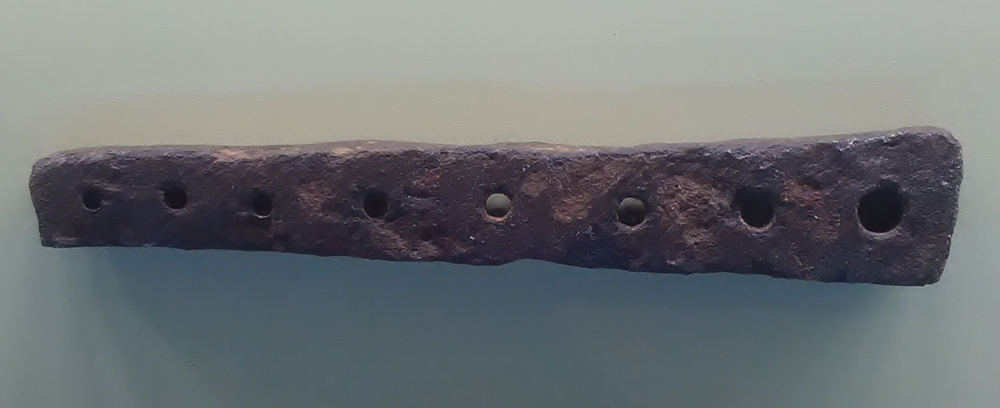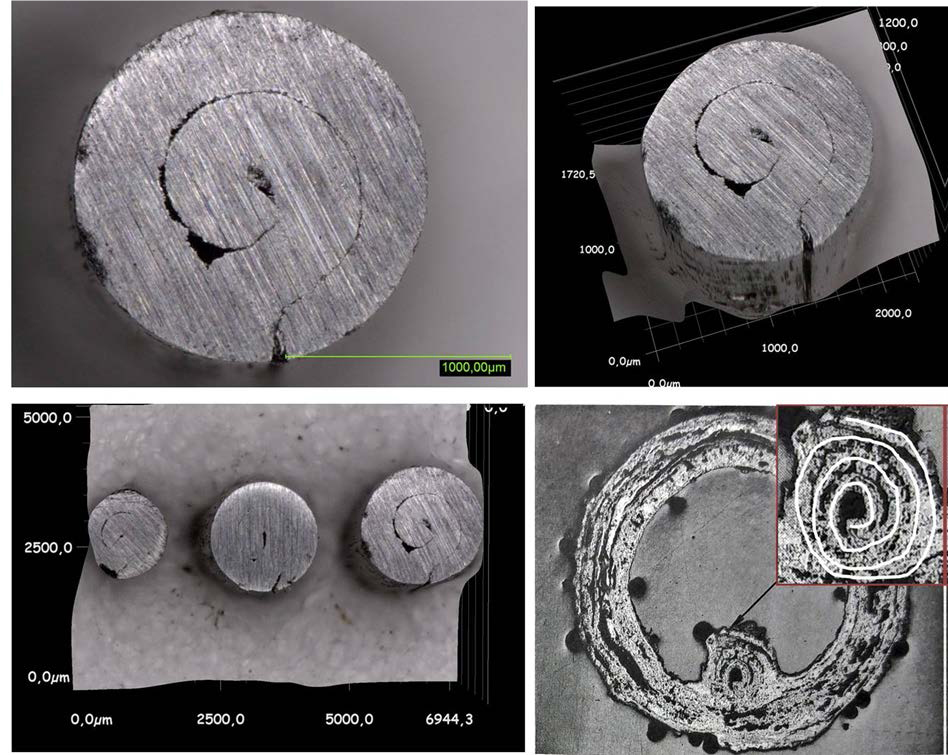The aim of this PhD project is to show that wires were in fact drawn in wire in antiquity and to provide an account of how the technique of wire drawing emerged. To this end, drawplates are identified and catalogued and microscopic analysis of wires are conducted together with jewellers and conservators with the aim of reconstructing the actual production methods and their development.
Research
Despite its importance for jewellery history and the development of mail armour, the history of drawn wires and its associated tools in antiquity and late antiquity has not been sufficiently studied. In fact, the existence of drawplates has occasionally been doubted or denied altogether. Thus, it has been disputed that wires were produced by drawing and in consequence draw marks on wires were mostly considered as proof of recent forgeries.
Punched plates used for drawing wire have been identified in the literature. Yet it has been doubted whether they were used for drawing. Instead, they have commonly been ascribed a function as nail header. However, due to the technical requirements for each kind of tool, a clear distinction can be made between a drawplate and a nail header. This distinction leads to a typology based on which, for the first time, a catalogue of drawplates is being assembled.

Figure 1: Drawplate from the roman legion camp at Vindonissa | Photo: Holger Becker
Together with Frank Willer, conservator at the LVR-Landes Museum Bonn, a new method of drawing wire has experimentally been probed. It has thus been possible to reproduce characteristics apparent in the microsection of a mail ring from the burial of Zemplín, which dates to the end of the 1st century AD. This allows us to conclude that the wire for the mail armour was produced by rolling a thin metal and drawing it afterwards through a drawplate. Results will be published in 2017.
With roll-drawing, a drawing technique has been identified which can account for the emergence of wire drawing in antiquity. Drawing of rolled thin metal imposes less technical constraints on the drawplates than drawing solid material. Once this technique had emerged, drawplates could gradually be perfected until they reached a degree of perfection which allowed solid wires to be drawn.

Figure 2: Microsections of a mail ring from the burial at Zemplín | Source: bottom right from: M. Longauerová – S. Longauer, Structural Analysis of a Scabbard and a Ring Mail from Zemplín, Slovenská Archeológia 38, 1990, 351 Fig. 3, 2. Top and bottom left: Microsections of wires drawn according to the roll-drawing method in the LVR-LandesMuseum Bonn | Photo: Frank Willer
This Ph.D. thesis is being written within the program “History of Ancient Science” (HistAS) of the Berlin Graduate School of Ancient Studies (BerGSAS).
